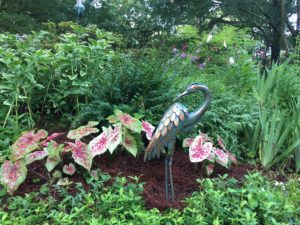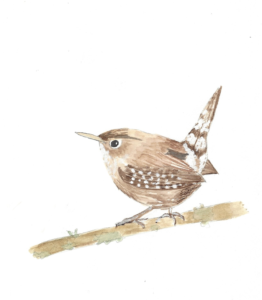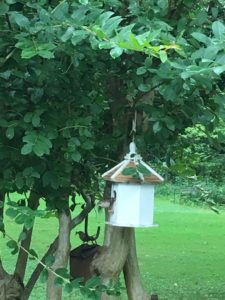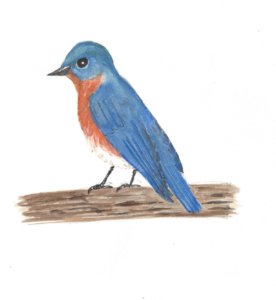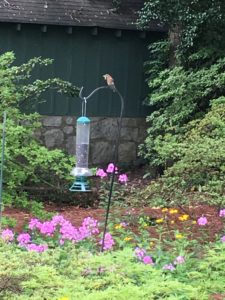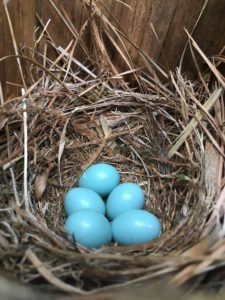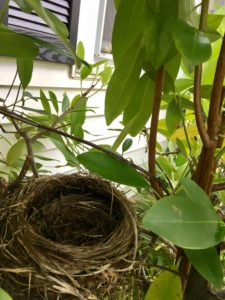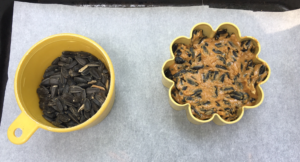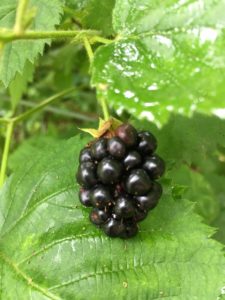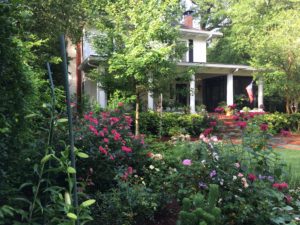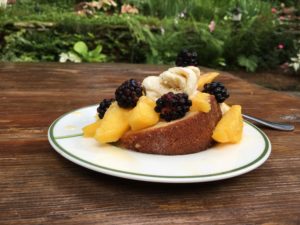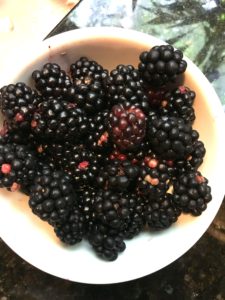(During the month of August, our dog, Sadie, traveled 4500 miles from Atlanta to Wyoming and Colorado with us. Below is her account of the journey.)

I have to admit that I wasn’t so sure about this traveling business for the first few days. My people put me in the crate and off we went. I could hear them chattering excitedly up front but from my viewpoint, there was absolutely nothing exciting going on. But, I’ve always been one to try to keep peace in the family, so I didn’t complain and just spent a lot of time dozing or looking at the long, long road stretching out behind me. Eventually, they stopped the car and that’s when the fun began.
Being of the canine persuasion, I am well aware that I have a limited vocabulary. But, they say that travel is educational and I have certainly found that to be true. I have added several new words:
Bear: this is something that gets my people very excited. Apparently, it moves and is very big.
Spectacular: this is a good thing. My people always sigh and sound very pleased when they use this word.
Pee: of course I knew this word for myself, I’d just never realized that people did it in the woods too. Interesting…..
The first place we stopped was a cabin where there was lots of space to run around. Early each morning, they would put me in the car and we would drive slowly up and down the road. One day, they stopped and used the bear word over and over. They were very excited. But they don’t know what they were missing!!! On the other side of the car was the biggest, fattest squirrel I’d ever seen. I kept trying to get them to look, but they were intent on the bear stuff. Poor humans. Oh well, I tried.
After a while, we left that place and drove on. When we stopped again, the humans seemed very pleased, then began dragging everything out of the car. They set up a little orange house and kept crawling in and out. It seemed odd behavior for humans, but then I think humans ARE odd. I could tell that the woman was a little nervous so I was surprised that they let me sleep in the car when it got dark, where it was all safe and sound and they crawled into that flimsy thing to sleep in. I thought that was very nice of them.
I could tell that the woman was a little nervous so I was surprised that they let me sleep in the car when it got dark, where it was all safe and sound and they crawled into that flimsy thing to sleep in. I thought that was very nice of them.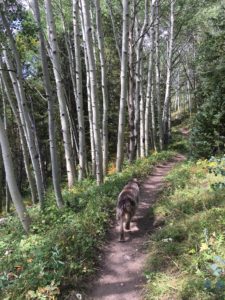
The hiking was the best. They let me off lead and as long as I stayed in sight (and thankfully you can see a LONG way out there) they let me run. And run I did! Back and forth, all around, through the trees and the meadows. I loved it!
I was usually pretty good, as I mentioned, I like to keep the peace. I only got into deep doo doo once. (literally, ha ha.) It happened like this:
We were hiking through a really great meadow and my people were just talking and not paying attention when I spotted a pile of great smelling, fresh stuff. So, being a dog, I rolled in it. Ecstasy!!! And then I trotted up to my woman and she, not paying any attention, reached down to pet me and rub my back, as always. And then she shrieked. I thought she must have seen a bear but apparently, she’d put her hand into the green stuff on my back. Well, from there on out, it wasn’t all that much fun. When we got to the lake, they poured freezing cold water all over me and rubbed me jdown with pine branches. Can you imagine? But it was worth it.
 What I liked best: sitting by the fire with my people at night, the smells (OMG the smells!) rolling in the grass (and other stuff) running free, chasing the fastest chipmunks in the west, just being with my people 24/7. It was a GREAT trip.
What I liked best: sitting by the fire with my people at night, the smells (OMG the smells!) rolling in the grass (and other stuff) running free, chasing the fastest chipmunks in the west, just being with my people 24/7. It was a GREAT trip.
In spite of the long time in the car (who says dogs don’t have a sense of time?), I’ve decided that I LOVE to travel. If you want to get in touch with me, write me at
TravelingDog@happytrails.com 





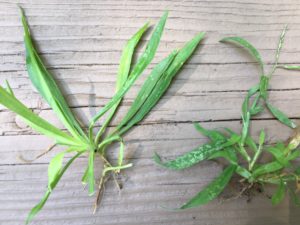
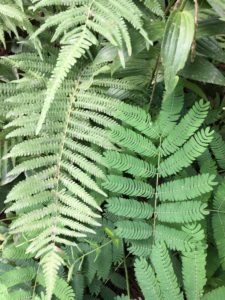 A great example of this is a mimosa seedling growing next to my prized ferns. I let it grow for weeks because I thought it was a fern. I had to stop and look and compare before I realized that I’d been tricked. If plants could laugh, this one would be, or at least until I yanked it out by the roots. Ha. Now who has the last laugh?
A great example of this is a mimosa seedling growing next to my prized ferns. I let it grow for weeks because I thought it was a fern. I had to stop and look and compare before I realized that I’d been tricked. If plants could laugh, this one would be, or at least until I yanked it out by the roots. Ha. Now who has the last laugh?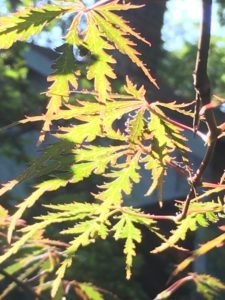 And, I was smug. This was going to be the best gift!!! Everything was fine for a while and then they began to grow which, usually, is a good thing. But I knew that maple seedlings should not grow a couple of inches in a few weeks. And then they began to put out very “un-maple like” leaves. And then I knew that I had potted up and nurtured some sly little devious weeds that were only posing as maple seedlings! Posers. The only good thing about this story is that I realized my mistake before smugly giving them to my siblings. I don’t know about your siblings but mine love to tease and I would have never heard the end of it!
And, I was smug. This was going to be the best gift!!! Everything was fine for a while and then they began to grow which, usually, is a good thing. But I knew that maple seedlings should not grow a couple of inches in a few weeks. And then they began to put out very “un-maple like” leaves. And then I knew that I had potted up and nurtured some sly little devious weeds that were only posing as maple seedlings! Posers. The only good thing about this story is that I realized my mistake before smugly giving them to my siblings. I don’t know about your siblings but mine love to tease and I would have never heard the end of it! I have learned, over the years, that it’s as important to weed by feel as it is to weed by touch. (Do you know what the worst thing you can say when you’re weeding? “oops.”) When I’m pulling up grass by the handful or whacking away at vines or digging out ivy or dollar weed or any number of other botanical pests, I invariably pull out something that I should have saved. What has saved many a treasure is that weeds have a certain feel when you pull them out and if I begin to pull and it feels differently, I’ll stop and look before continuing.
I have learned, over the years, that it’s as important to weed by feel as it is to weed by touch. (Do you know what the worst thing you can say when you’re weeding? “oops.”) When I’m pulling up grass by the handful or whacking away at vines or digging out ivy or dollar weed or any number of other botanical pests, I invariably pull out something that I should have saved. What has saved many a treasure is that weeds have a certain feel when you pull them out and if I begin to pull and it feels differently, I’ll stop and look before continuing.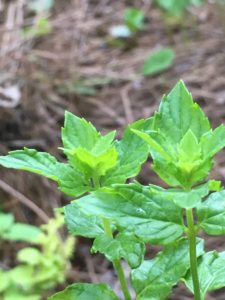 There’s a lot of discussion about the definition of a weed but generally it’s a plant growing where you don’t want it to grow, or one that has overstepped the bounds of good behavior. There are many plants that are perfectly wonderful horticultural specimens that I won’t have in my garden because they are simply too rambunctious and don’t know when to stop. Mint is one great example, cleome is another. Both will absolutely take over if you let them.
There’s a lot of discussion about the definition of a weed but generally it’s a plant growing where you don’t want it to grow, or one that has overstepped the bounds of good behavior. There are many plants that are perfectly wonderful horticultural specimens that I won’t have in my garden because they are simply too rambunctious and don’t know when to stop. Mint is one great example, cleome is another. Both will absolutely take over if you let them.
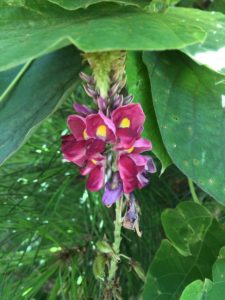 Probably the most invasive weed in the South is kudzu. It was introduced from Japan in the early 20th century as a means of controlling erosion. It is now the “plant that ate the South.” But kudzu, with its truly beautiful flower, is a great example of the fact that something good can be found in every creature, except maybe cockroaches. Or those darn little maple-look-alikes.
Probably the most invasive weed in the South is kudzu. It was introduced from Japan in the early 20th century as a means of controlling erosion. It is now the “plant that ate the South.” But kudzu, with its truly beautiful flower, is a great example of the fact that something good can be found in every creature, except maybe cockroaches. Or those darn little maple-look-alikes.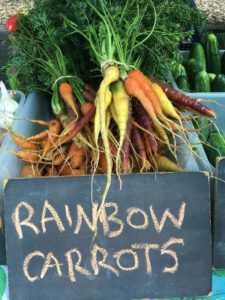
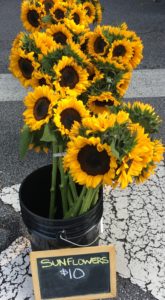

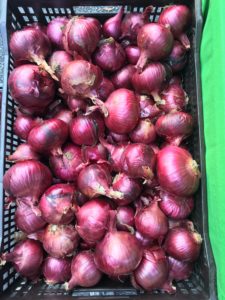
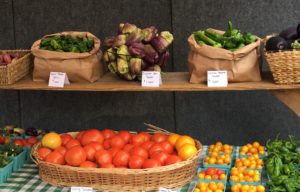
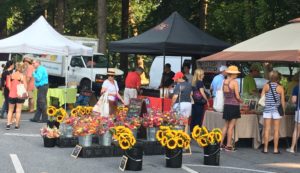


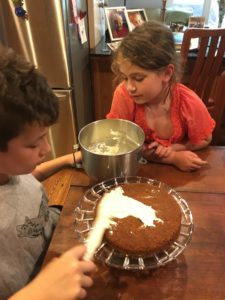
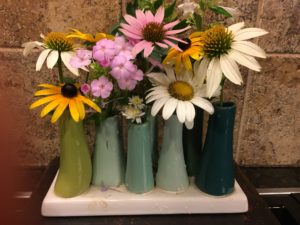 There is nothing that makes a house looks more loved than a bundle of fresh flowers. It doesn’t have to be elaborate or large, just a few weeds cut from
There is nothing that makes a house looks more loved than a bundle of fresh flowers. It doesn’t have to be elaborate or large, just a few weeds cut from 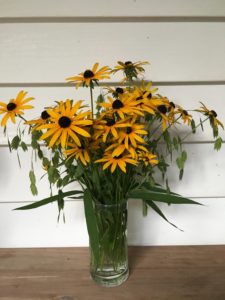 the roadside and placed on a table make a loving statement. Place a small vase with a single flower in the bathroom and
the roadside and placed on a table make a loving statement. Place a small vase with a single flower in the bathroom and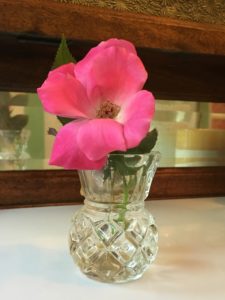
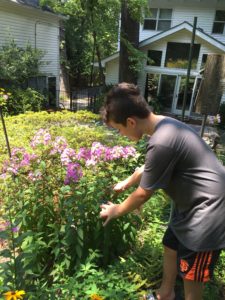
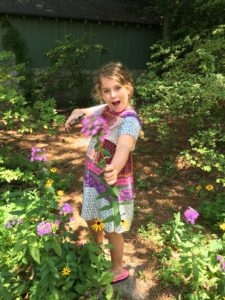
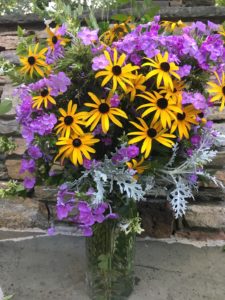 There are only a couple of rules and if you follow them, you’ll have beautiful, long lasting arrangements.
There are only a couple of rules and if you follow them, you’ll have beautiful, long lasting arrangements.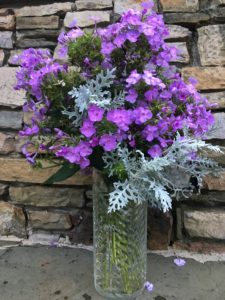
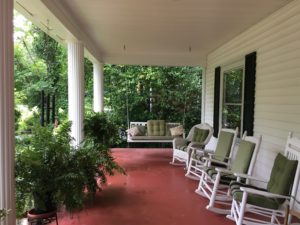 My front porch is one of my favorite places on earth. With white columns and a row of rocking chairs, it is quintessentially southern. I’m not alone in my love of a good porch. For many of us, a porch symbolizes a stress free zone, a place where you can sit and talk or read, or just rock and enjoy the sound of the crickets singing in the darkness.
My front porch is one of my favorite places on earth. With white columns and a row of rocking chairs, it is quintessentially southern. I’m not alone in my love of a good porch. For many of us, a porch symbolizes a stress free zone, a place where you can sit and talk or read, or just rock and enjoy the sound of the crickets singing in the darkness.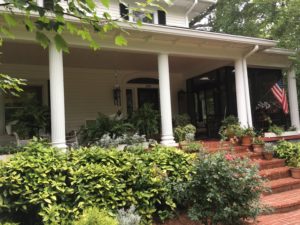
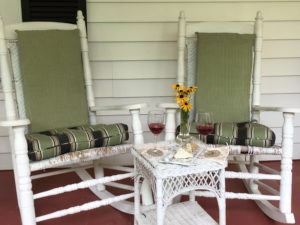

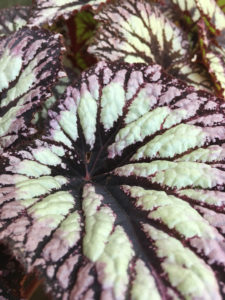 I have to admit that my porch plants will never win any beauty contests. Most of them I keep for sentimental reasons. I have a huge aloe plant from my mother, a basket of ferns from my son’s wedding, lucky bamboo that our children gave us the year Jack and I met, and Jack’s mother’s rabbit foot fern which won a prize at the Atlanta Flower Show 35 years ago.
I have to admit that my porch plants will never win any beauty contests. Most of them I keep for sentimental reasons. I have a huge aloe plant from my mother, a basket of ferns from my son’s wedding, lucky bamboo that our children gave us the year Jack and I met, and Jack’s mother’s rabbit foot fern which won a prize at the Atlanta Flower Show 35 years ago.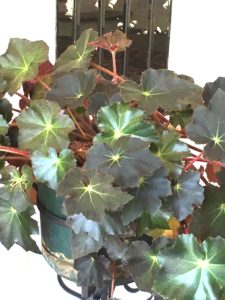

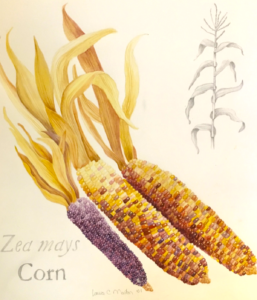
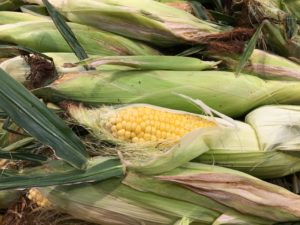
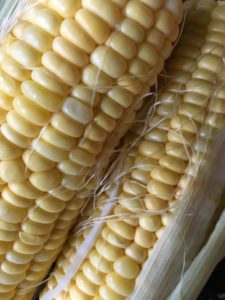
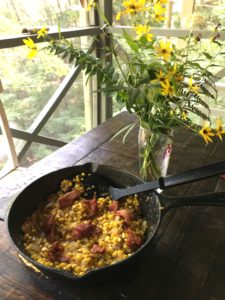
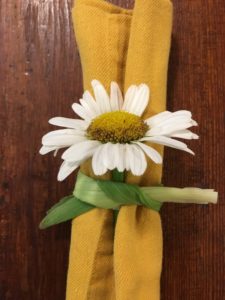 If you want to do something fast and simple for a summer supper, just tie a long piece of green shuck around a napkin and add a fresh flower. Choose a piece of husk that’s thin enough to tie easily but not so thin it will break.
If you want to do something fast and simple for a summer supper, just tie a long piece of green shuck around a napkin and add a fresh flower. Choose a piece of husk that’s thin enough to tie easily but not so thin it will break.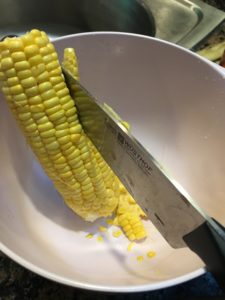
 July and my summer garden is in full bloom,
July and my summer garden is in full bloom, 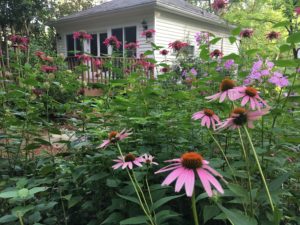
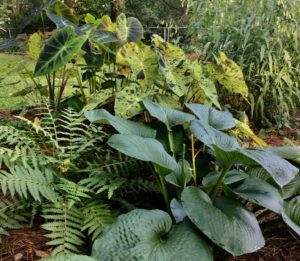
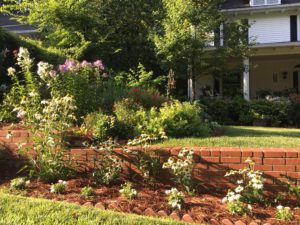 It was in the front garden that I had my first stumbling block this year. A low brick wall flanks steps and a central walkway up to the house. I always plant a mixed border here, taller perennials in the back, full, vibrant long lasting annuals in the front and I plant only white flowers to complement the house. Last year I planted annual white vinca and in the heat and drought of the 2016 summer, they did spectacularly well. Not so in the rainy, extremely humid 2017 Atlanta summer. I planted white vincas twice this year and finally gave up, putting in white
It was in the front garden that I had my first stumbling block this year. A low brick wall flanks steps and a central walkway up to the house. I always plant a mixed border here, taller perennials in the back, full, vibrant long lasting annuals in the front and I plant only white flowers to complement the house. Last year I planted annual white vinca and in the heat and drought of the 2016 summer, they did spectacularly well. Not so in the rainy, extremely humid 2017 Atlanta summer. I planted white vincas twice this year and finally gave up, putting in white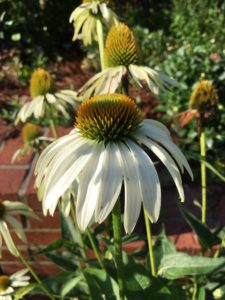 pentas instead. The problem is, I was really late getting them in and it will be late summer (if at all) that they look “vibrant.” Timing is so important when gardening. Annuals need a chance to put down roots and become comfortable before the stress of summer weather hits, whether it is heat and drought or high humidity. Fortunately, perennials, such as this white echinacea, are looking good.
pentas instead. The problem is, I was really late getting them in and it will be late summer (if at all) that they look “vibrant.” Timing is so important when gardening. Annuals need a chance to put down roots and become comfortable before the stress of summer weather hits, whether it is heat and drought or high humidity. Fortunately, perennials, such as this white echinacea, are looking good.
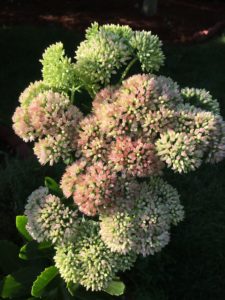 I stuck a couple of vegetables in toward the back. I was late putting them in (again, bad timing!) and they are shaded by taller plants that got a head start on them. To describe them as puny is being generous.
I stuck a couple of vegetables in toward the back. I was late putting them in (again, bad timing!) and they are shaded by taller plants that got a head start on them. To describe them as puny is being generous.